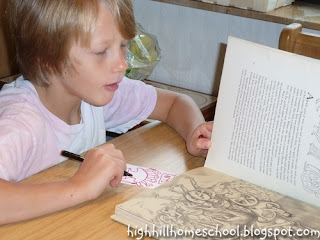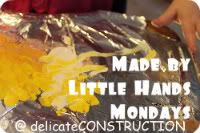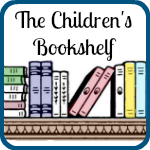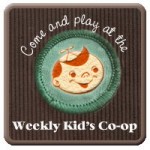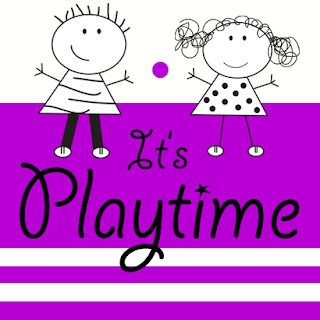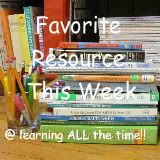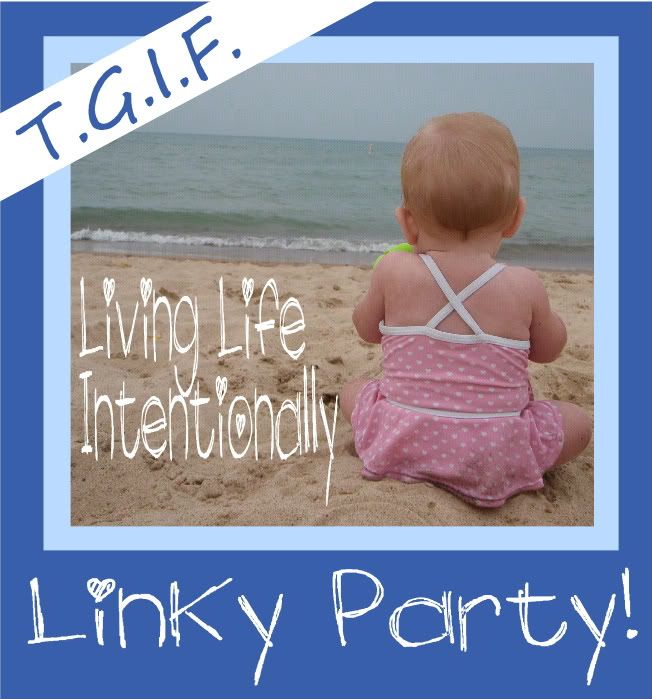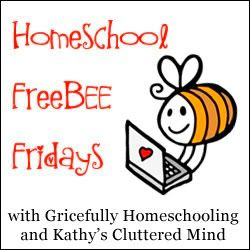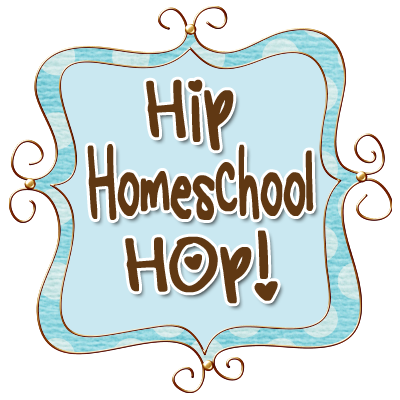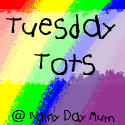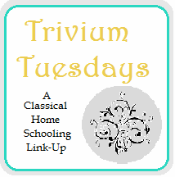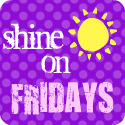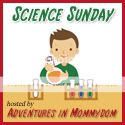Who Homeschools? is a regular feature on the
Hammock Tracks Home School blog. Interviews with homeschooling families provide insight into why and how families homeschool. I was recently asked to take part in Who Homeschools? Participants write-up answers to several questions listed below. Visit
Hammock Tracks to see why others homeschool.
● How did you end up deciding to teach your children at home? Have they always been home schooled or did they attend school outside the home, at one point?
My oldest went to a wonderful Montessori Kindergarten. Despite the fact that the school had classes through 6th grade, I still wanted to homeschool. Before she went to kindergarten we read tons of books and did many educational activities such as coloring state maps, creating our own calendars and learning to read. After she started kindergarten and I wanted to read to her in the afternoon, she said “Mom, I already did that today.”
My son has always been home with me, but my five year old attended a German pre-school for three years. We moved to Germany when she was 2.5 and I wanted to get involved with the community. The pre-school was excellent. There were only two classrooms which each contained children from 2-6 years old. The kids had lots of time for free play. My daughter learned to speak German fluently, made friends with the neighborhood kids, played lots of memory, drew pictures and learned some new songs. She would still be attending the preschool this year if she hadn’t been diagnosed with Leukemia in June.
● Summarize how you reached this decision.
When I was in elementary school my parents sent me to the open classroom which was different from public school. The classrooms contained mixed age children, the kids sat at tables, were free to move about the room, called the teachers by their first names and worked at their own ability level. Since my own education was far from mainstream, I think I sought something a bit different for my own children.
While exploring different educational options I met a woman who became a good friend. She homeschooled her four children. Through watching her I saw many benefits to homeschooling. I began reading books and was convinced it was the right decision for us. Once I had my husband’s support we began.
● What is your goal in home educating your children?
I want the best possible education for my children.
● Do your children have extra curricular activities? If so, what are they?
Yes many, though we have stopped attending some temporarily due to my daughter’s Leukemia I will list them all; Dance, piano, violin, tennis, homeschool history co-op, homeschool park days, and community gym class.
● Have you ever hired someone to teach a subject to your children? If so, why?
Yes – piano and violin. I taught my daughter piano until she passed beyond my ability. I know nothing about the violin and have too many other current responsibilities to learn. I thought a knowledgeable teacher would be much better.
● Have you graduated a child? Do you plan to teach through high school?
My oldest is in 6th grade. Yes, we plan to homeschool through high school.
● Do you have a defined style of instruction such as Classical, Montessori, unschooling, or Charlotte Mason? Are you willing to share how you decided to use this method?
Cathy Duffy’s book had a list of questions to help parents understand the homeschooling method(s) they prefer. I lean toward Charlotte Mason, but don’t use the method exclusively. I like the living book, foreign language, and music study aspects of the philosophy. The kids are learning to speak German and Spanish through living materials and interactions with native speakers. In our homeschool we play games, do lots of hands-on projects and read many books.
● What does your schedule look like? Do you start early and finish just after lunch? Or do you start later in the day? Do you teach through the summer? And if so, why?
The kids have work they do on their own and work they do with me. They begin as soon as they wake up. We are usually done by early afternoon. We do not homeschool in the summer. I need a break!
Since my youngest was diagnosed with Leukemia this summer our schedule has changed a bit this year. I currently spend five days in the hospital out of every two weeks. The two older kids have been forced to work more independently. Ironically, it is working very well. I usually send them emails with assignments. They have been watching history videos on youtube and creating computer programs using Scratch. They read a lot on their own and work through their math problems while I’m away.
When I get back they show me what they have done and we focus on reading, math, writing and projects we do together.
● Do you home school for religious reasons? If so what religion are you?
No
● Do you have a vision statement for your home school? If so, what is it?
No
● If you were to recommend a book(s) to a new or prospective home school parent, what would you choose?
Family Matters: Why Homeschooling Makes Sense by David Gutterson
● What was your number one concern or worry when you started out on this endeavor? Has it continued to be your main issue? Why has it changed?
I wanted to make sure my kids had friends. It is no longer a big concern. The kids don’t have an excessive amount of friends, but they have several very close friends. Living in a military community where people tend to move every three years complicates this issue a bit, but I have figured out how to deal with it. We just attend many extra-curricular activities which provide the kids opportunities to make new friends.
● What aspect of home schooling do you enjoy the most? What part do you greatly dislike?
It’s really hard to pick just one aspect that I enjoy.
I love to see the kids progress and conquer new concepts.
Living temporarily in Europe we have seen many historical sites.
I like the freedom to design my own curriculum.
The kids get along and play well together.
There aren’t too many aspects I dislike, but homeschooling can be all consuming and overwhelming. I spend a lot of time planning activities and researching resources. After household duties and lesson planning is finished, there is often little time left for play.
● Are/Were there any subjects that you felt incapable of adequately teaching? Have you overcome this? If so can you explain how you have achieved this?
Science has been a challenge from the start. I spend a lot of time developing curriculum and activities.
● Is there anything that you would like others to know about your home schooling?
My husband took a temporary job in Germany so we could experience living in a foreign country and see Europe.
On a side note… Homeschooling is illegal in Germany. We are protected under SOFA – Status of Forces Agreement. It is an agreement between the American and German government which protects our rights to homeschool.
Taking the job was an excellent decision. We have been here three years, done a lot of traveling and would like to remain here several more. So much learning happens through travel, and when travel can be connected with subjects of study the impact lasts a lifetime. For example, we studied the ancient Olympics and we visited Olympia, Greece. My kids will never forget the stadium. If you ever have an opportunity to live overseas I would highly recommend taking it!



